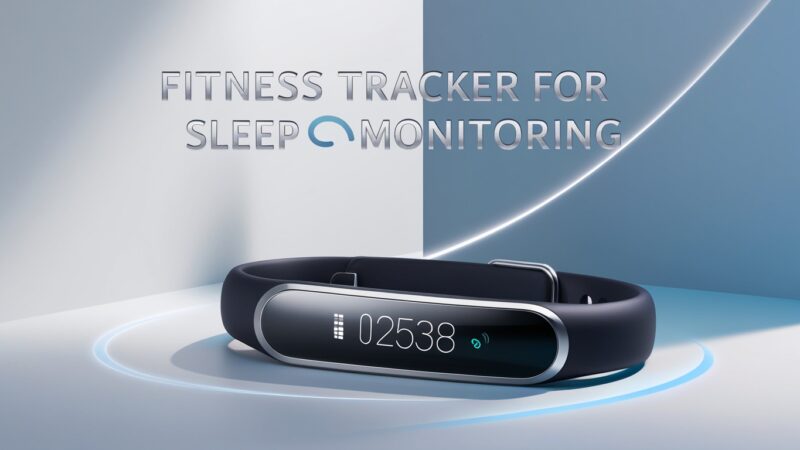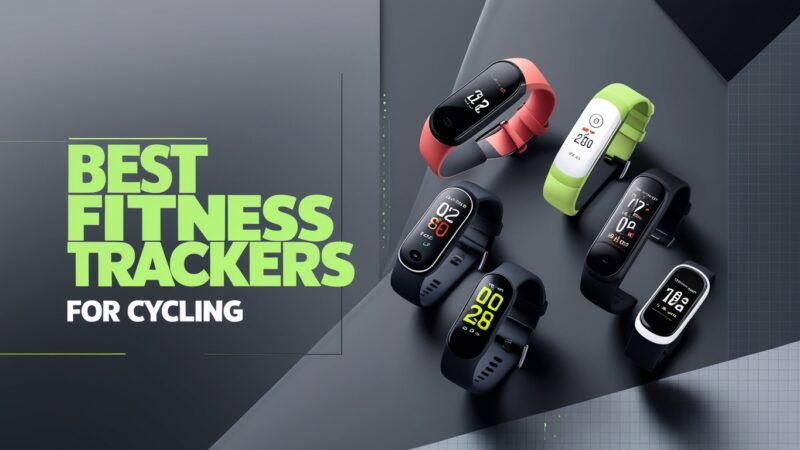Home Gym Equipment Safety: Tips for a Secure Workout

Ensuring Home Gym Equipment Safety
Proper Setup and Maintenance
Let’s talk about keeping your home gym equipment safe. It’s super important, right? Because let’s face it, dodgy equipment or poor handling can lead to some serious injuries. The good news? If you nail the setup and maintenance, you’re already half the way there!
Before diving into any assembly:
- Read the manufacturer’s instructions thoroughly.
- Ensure every part is securely fitted.
- Keep the equipment level and buckle it down on the ground.
- Tighten bolts and screws from time to time to prevent any loosening.
Inspecting for Wear and Tear
Regular check-ups on your home gym gear are a must! You’ve gotta watch out for:
- Cracks or chips
- Frayed cables
- Loose joints
- Any other visible damage.
If you spot something worn out? Replace it ASAP to avoid accidents. And remember to check weight limits—you don’t want to push it too far!
Proper Form and Technique
Using your home gym equipment the right way matters a lot. Incorrect form can lead to strains or joint pain, which no one wants. Take a few minutes to:
- Learn the correct way to perform exercises.
- Think about hiring a trainer or expert for some guidance.
It not only keeps you injury-free but also makes sure you’re getting those gains. Win-win!
Cardio Equipment Safety
When you’re hopping on treadmills, ellipticals, or stationary bikes, keep your speed and incline steady. You don’t want to surprise yourself with a sudden speed up or a drop in elevation. It can really throw you off balance. Always start slow, increase as you feel more comfortable.
Strength Training Equipment Safety
Using weights, resistance bands, or machines? Extra caution is key. Make sure you’ve got the right weight and technique. And if you’re lifting free weights? Keep your environment under control—no silly drops or accidents!
Safety Accessories and Protective Gear
Want an extra layer of safety? Think about getting some gear like:
- Safety clips
- Emergency stop buttons on your cardio machines.
- Proper footwear and comfortable clothing.
These can really amp up your home gym safety!
Spotters and Supervision
For heavy lifting, having a spotter nearby is a wise move. Activities like bench presses or squats can get dodgy if something goes wrong—so, if you can’t snag a workout buddy, look into safety racks. They’re great for added protection.
Proper Storage and Cleaning
A clean home gym is a safe home gym, plain and simple. After each sweat session:
- Wipe everything down with disinfectant.
- Store weights and accessories in their designated spots.
- Keep your space organized and well-lit to minimize any chance of accidents.
Ongoing Education and Awareness
Making safety a continuous focus in your home gym is vital. Stay informed on:
- Latest safety practices.
- Industry updates by reading publications.
- Workshops or expert advice.
Being proactive about safety can save you from potential mishaps. Keep your eyes peeled for any issues in your space!
Best Practices for Setting Up a Safe Home Gym
Ensure Proper Equipment Placement
Planning how to set up your home gym? Think of it this way—bad layout can lead to chaos. Arrange your equipment to allow as much movement as possible and avoid areas that look tight or hazardous. Keep enough space around equipment to dodge those accidents.
Prioritize Stability and Anchoring
Got heavy stuff? You need to anchor it down! Secure items like treadmills or weight racks to walls or floors to keep them steady. Adding anti-slip mats can also help them stay put. Regular checks on the stability can prevent unnecessary mishaps.
Ensure Proper Equipment Maintenance
Don’t let regular maintenance fall by the wayside! Stick to a schedule for:
- Cleanliness—wiping down equipment is a must.
- Tightening bolts and replacing parts as needed.
- Ensuring that moving parts stay lubricated.
- Checking tension components for any wear.
- Making sure safety features work as they should.
Proper Maintenance Checklist:
- Wipe down equipment after use.
- Inspect all nuts and bolts for tightness.
- Lubricate moving parts as per the manufacturer’s guidelines.
- Check for signs of wear or fraying in cables and weight stacks.
- Ensure safety features work properly.
Establish a Safe Workout Environment
Creating a comfortable workout environment is essential. Make sure your space is well-lit and ventilated. Look at the flooring too—shock-absorbing surfaces can do wonders for your joints.
Additional Safety Considerations:
- Keep clear paths for movement.
- Secure loose cords or cables to avoid tripping.
- Designate storage areas for accessories to stay organized.
- Have a first-aid kit on hand—safety first!
Educate Yourself and Others
Knowledge is power! Read and absorb the manufacturer’s instructions for your gear. Think about taking a fitness or personal training course to up your game. And don’t forget to vibe with your family members about safety—especially kids; they need to know the ropes!
Suggested Educational Resources:
- Manufacturer’s manuals
- Online tutorials
- Fitness or personal training courses
- Guidelines from fitness organizations
Common Home Gym Safety Hazards and How to Mitigate Them
Identifying and Addressing Common Home Gym Safety Hazards
Starting a home gym can be fantastic for sticking to your fitness routine. But pay attention to safety, so you don’t find yourself sidelined by little mistakes. Here’s what to look out for!
Improper Setup and Installation
Mismatched assembly isn’t just a headache; it’s a safety risk. Always stick to the installation guide. If in doubt, don’t hesitate to call in the pros to help get it right.
Lack of Maintenance and Inspection
Your gear can wear out and break down over time. Schedule regular checks on everything—tighten bolts, check overall condition, and fix issues when you see them. Keep up with manufacturer recommendations to stay safe!
Improper Use and Technique
We’ve all been there, pushing ourselves too hard—it can lead to injury. Take time to find out how to use all equipment correctly. Consider finding a trainer or signing up for virtual classes—they’re super helpful.
Tip:
Invest in a personal trainer or join some online fitness classes that can guide you on using the tools properly.
Slips, Trips, and Falls
Your gym can become a risk zone if you’re not careful about these dangers. Keep everything bright and tidy, and use non-slip flooring while watching out for any loose cables or uneven surfaces. Do a quick safety sweep, and keep paths clear for safe navigation!
Overexertion and Muscle Strain
Being overzealous can lead to serious muscle strain, so make sure you:
- Listen to your body.
- Start with lighter weights or resistance.
- Incorporate warm-up and cool-down exercises regularly.
Electrical Safety Risks
If your gear needs a plug, you’ve got to stay vigilant. Check electrical bits for damage and ensure everything is grounded properly. Poke around a lot, keeping an eye out for any issues.
Proper Storage and Organization
A tidy gym can drastically enhance safety. Keep equipment in designated spots and make sure nothing’s lying around. Tripping hazards are the last thing you want while powering through your workout!
Proper Maintenance and Inspection of Home Fitness Gear
Maintaining the Fitness of Your Home Gym Equipment
Snagging home gym equipment is a fantastic way to stay active, but keeping it clean and maintained is the unsung hero of fitness success. How do you do that? Let’s dive into some key steps!
Cleaning and Inspecting Your Equipment
Regularly wipe down your gear to keep dirt and sweat at bay. Don’t ignore moving parts like cables and pulleys—keep an eye on them to make sure everything is in tip-top shape.
Checking for Wear and Tear
Stay sharp by examining your equipment for any visible signs of wear, such as:
- Cracks and tears.
- Loose screws and bolts.
- Wobbly parts.
If you spot an issue? Fix it sooner rather than later. Do it yourself or call in an expert if you need to!
Lubricating Moving Parts
Keep those moving parts well lubricated for optimal performance. Check the manual for what type of lubricant is best and don’t overdo it; a little goes a long way!
Proper Storage and Maintenance
Store your equipment properly when you’re not using it—away from moisture or direct sunlight, to prevent damage.
Maintaining Resistance Bands and Tubing
Resistance bands need special love! Look out for any signs of damage, and stash them somewhere away from heat and sunlight.
Caring for Cardio Equipment
For treadmills and elliptical machines, always stick to maintenance guidelines about cleaning and inspecting parts. Maintain stability and address any repairs quickly.
Safety Considerations
Safety should top your list every single time you hit the gym. Make sure everything is set up right on a level surface and check that all safety features are working, like emergency stops. Learn the ropes with proper form for all exercises to avoid injuries.
Proper Assembly and Anchoring
Follow instructions to the letter during assembly. Ensure freestanding equipment is secured to prevent any tipping mishaps. Check all fasteners to make sure they’re nice and tight.
Replacing Worn or Damaged Parts
Spotted something gnarly? Replace worn-out parts right away. Using damaged equipment is a no-go and could lead to injury. Consult the manufacturer for the best parts and installation guidance.
Educating Yourself and Family on Home Gym Safety Protocols
Establishing a Safe Home Gym Environment
Creating your home gym can help you crush fitness goals while keeping healthy! Just remember safety comes first, so let’s set the rules for a safe workout space.
Selecting Appropriate Equipment
When buying gear, go for sturdy, reliable options. Secondhand or cheap stuff can often break or malfunction, so be wary and choose wisely. Check that the equipment matches your fitness level and always follow the setup instructions.
Proper Equipment Placement and Anchoring
When laying out your gym, leave plenty of room around each piece of equipment for free movement. Anchor heavier pieces securely to prevent them from tipping over. It’s all about creating a safe layout!
Maintaining Equipment Regularly
Regular maintenance is your best friend! Stay on top of any loose screws or worn parts and give them a clean sweep often to keep everything in order.
Educating Yourself and Family on Safe Practices
Whether you’re a gym newbie or a seasoned pro, knowing the ins and outs of safe practices is key. Understanding proper form and techniques for using equipment reduces the chance of injury.
Proper Technique and Form
Make sure you’re practicing good form; seek guidance if you’re unsure! Trainers or even online resources can do wonders in shaping your workout style.
Establishing Safety Protocols
Set clear guidelines for using your gym:
- Watch over younger users.
- Wear proper gear when exercising.
- Take care for pregnant or older users.
- Always have first-aid supplies at hand.
Educating Family Members
Make sure everyone in your household knows how to use the gym safely. Set time aside for training and have regular reminders to keep safe habits fresh!
Safety Practices into Your Routine
Sewing safety into your workout routine is a game-changer. Here are some top ways to stay safe:
Utilizing Safety Features
Many pieces of equipment offer built-in safety features. Get familiar with them and ensure everything is functioning correctly before your workout.
Warm-up and Cool-down
Never skip a warm-up or cool-down! A few minutes of stretching or light exercise can go a long way in injury prevention and muscle recovery.
Knowing Your Limits
Stay tuned in with your body and don’t push yourself too hard. If something doesn’t feel right, stop and listen to what your body’s telling you.
You can now buy my E-Book on Discount for only $4! If you need personal help or a program, you can reach out to me on Instagram!
Advanced Techniques for Home Gym Equipment Safety
Utilizing Technology in Safety
Incorporating technology into your home gym can significantly enhance safety. Here are some savvy tech solutions:
- Wearable Fitness Trackers: These devices can monitor your heart rate and activity levels. If you push yourself too hard, alerts can remind you to take it easy.
- Smart Gym Equipment: Many modern machines now come equipped with built-in safety features, such as automatic shut-offs and programmable safety settings tailored to your fitness level.
- Fitness Apps: These can provide guided routines that emphasise proper form, ensure you’re using the equipment correctly, and include reminders for breaks.
Incorporating these technologies fosters a safer workout environment and encourages you to stay engaged.
Using Environmental Factors to Boost Safety
Your gym space itself can contribute greatly to your safety. Here are a few environmental adjustments to consider:
- Lighting: Ensure your gym is well-lit; poor visibility can lead to accidents. Natural light is ideal, but if that’s lacking, invest in adequate lighting fixtures.
- Temperature Control: Maintain a comfortable temperature to reduce the risk of overheating or muscle injury caused by cold muscles.
- Flooring Choices: Opt for flooring that provides a good grip and reduces the chances of slips. Rubber mats or foam tiles are fantastic choices.
Small adjustments in your environment can lead to a considerable impact on your overall safety.
Engaging in Community Safety Initiatives
Staying connected with your local gym community can provide new safety insights. Here’s how you can get involved:
- Follow Local Regulations: Keep yourself informed about local gym safety regulations that might apply, especially as these can change.
- Participate in Workshops: Join local gym events or workshops that focus on the latest home gym safety techniques and best practices. They often share valuable insights that can keep your home gym safe.
- Online Forums and Groups: Engage in online communities discussing home gym safety. Members frequently share their experiences and tips.
Being part of a community helps you stay proactive about safety measures.
Focusing on Mental Awareness During Workouts
It’s not just about physical safety; your mental state can significantly impact how you handle equipment. Stay in tune by:
- Staying Focused: Eliminate distractions while working out. Turn off notifications, put your phone away, and concentrate on your workout.
- Emotional Readiness: If you’re feeling fatigued, stressed, or unwell, skip the workout. Your mental health directly affects your physical capabilities.
- Mindfulness Techniques: Incorporate mindfulness techniques such as breathing exercises or meditation before workouts. It may improve your focus and awareness while exercising.
Keeping a clear head during workouts reduces the risk of accidents significantly.
Regular Training and Certifications
Continuing education can help you stay updated with the latest safety protocols. Consider the following:
- Certification Courses: Attend courses offered by fitness organizations about equipment use and safety procedures. This can enhance your ability to train effectively while minimising risk.
- First Aid Training: Invest time in first-aid and CPR training. Being prepared for emergencies can make a world of difference.
- Influencer Tips: Follow trusted fitness influencers or trainers who share insights about home gym safety regularly. They often provide valuable information and resources.
Investing time in training ensures you’re always learning the best practices for safety.
Considering Family Safety Dynamics
When planning your home gym, take into account family members who might use the space. Here’s how:
- Establish Family Rules: Set specific gym usage rules for each family member, especially for younger ones. Ensure they understand the importance of safety while working out.
- Safeguard Equipment: Place weight equipment out of reach or secured when not in use to prevent accidents with young children.
- Encourage Safe Practices: Hold family workout sessions where everyone can apply what they’ve learnt about equipment safety collectively.
Creating a safe environment for the entire family makes working out a healthy joy instead of a risk.
Conclusion
When it comes to home gym equipment safety, taking a proactive approach is crucial for ensuring a safe and effective workout experience. From ensuring proper setup and maintenance to regular inspections, each detail counts. Use technology wisely, maintain a conducive environment, and stay mentally aware during workouts. Engaging with your community and continuing your education can further enhance your approach to safety.
Ultimately, making safety a priority ensures that you can enjoy working out in your home gym while mitigating potential risks. Let’s keep our fitness journey safe and productive!
For more information, explore our website. You can find answers to common questions in our FAQ section, learn more about us on our Home page, discover the range of services we offer in the What We Provide section, get in touch with us through the Contact page, and stay connected with us on our Socials.
You can now buy my E-Book on Discount for only $4! If you need personal help or a program, you can reach out to me on Instagram!






